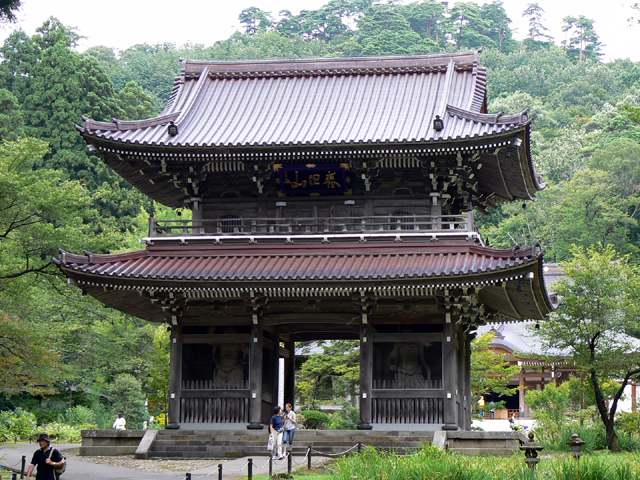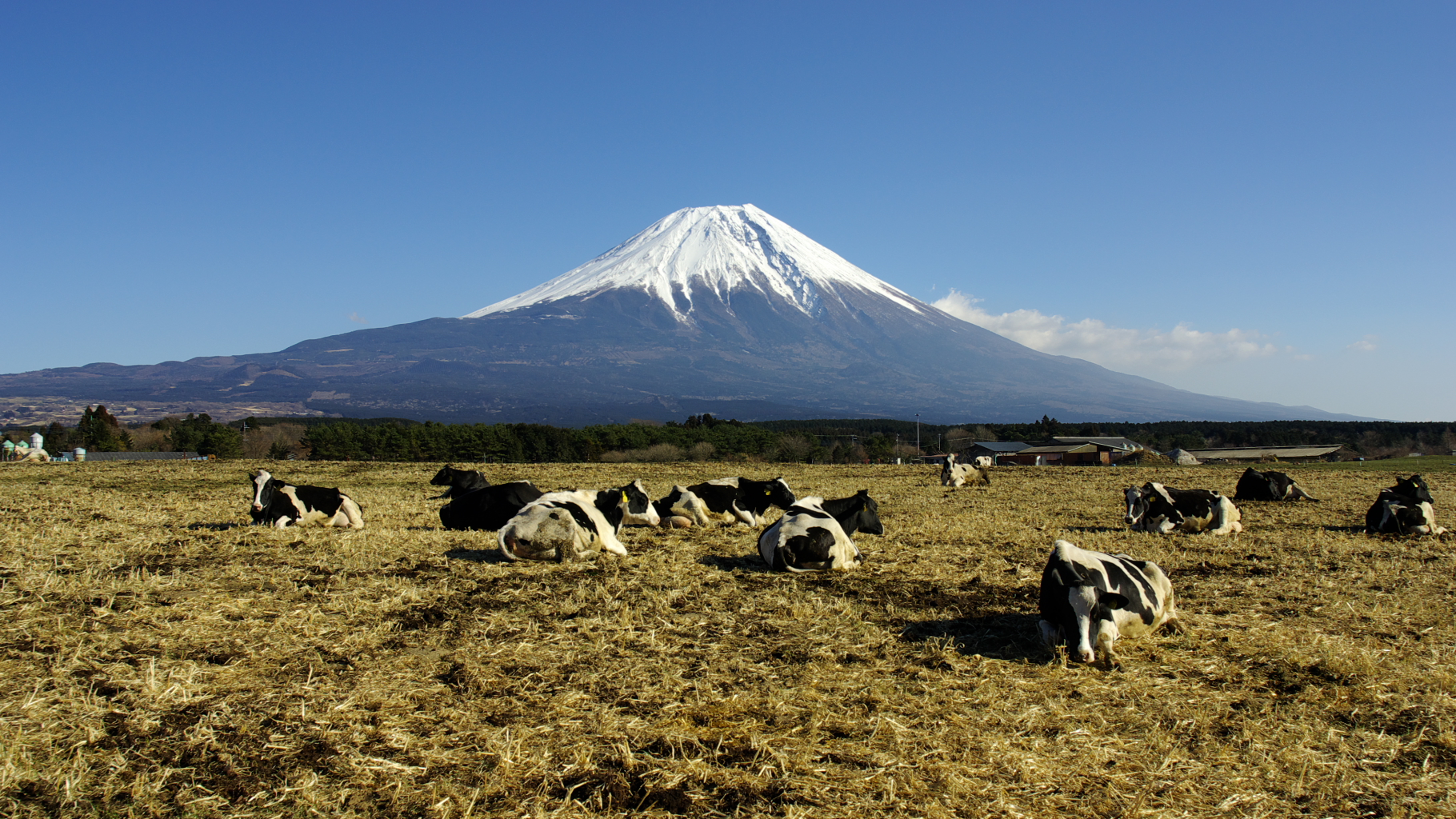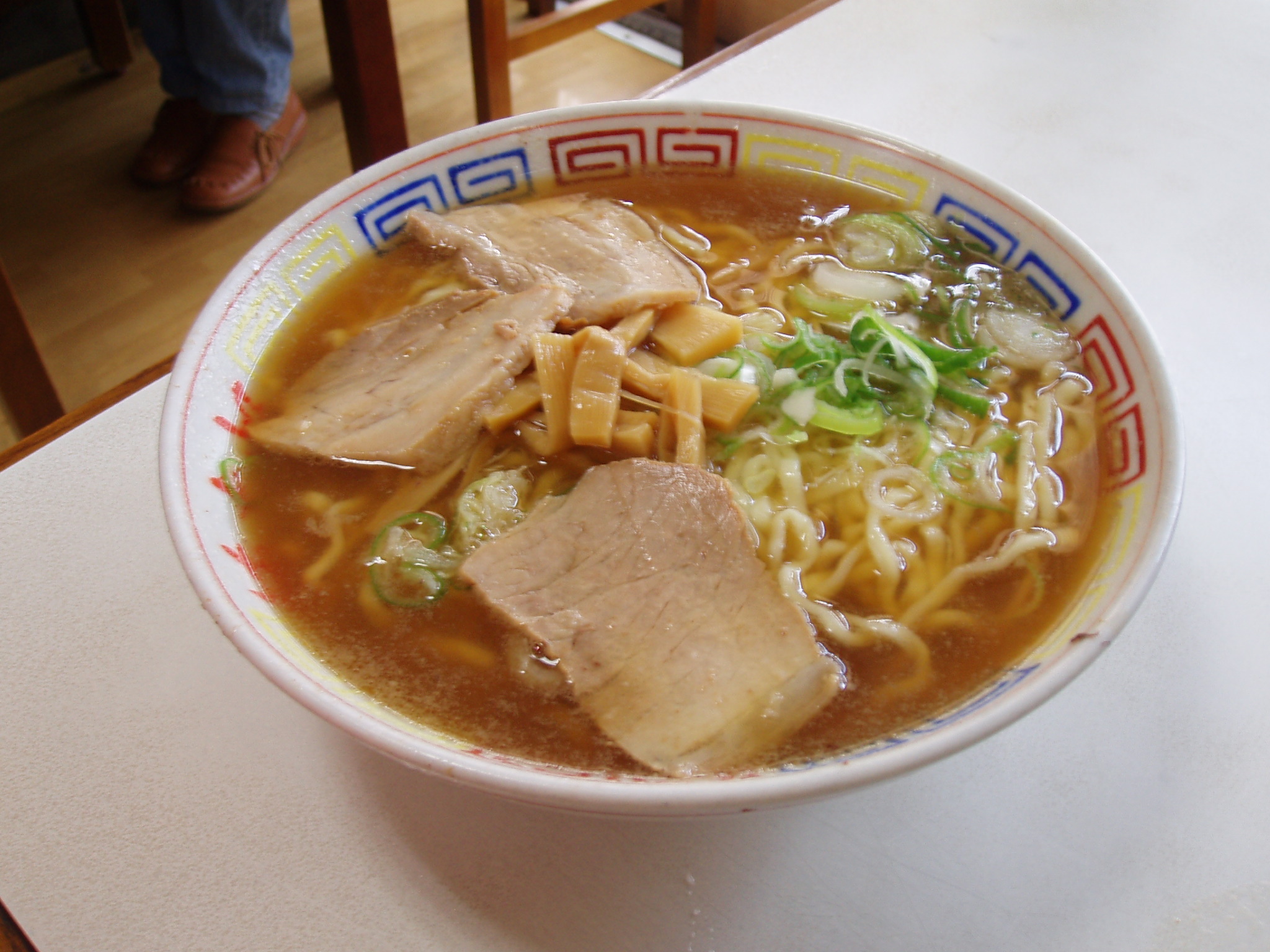|
Mount Iide
is the main peak of the Iide mountain range that spans the Fukushima, Niigata and Yamagata prefectures in Japan. On top of the mountain stands the . Mount Iide is, together with the rest of the range, one of the mountains described in Kyūya Fukada's book 100 Famous Japanese Mountains. Mount Iide is located at 2105 m above sea level but is not the highest peak of the Iide mountain range even though it is the main peak of the range. The highest is that is 2128 m high. The mountain is located on the border between Niigata prefecture and Yamagata prefecture, but the summit itself, Mount Iide Shrine and a path roughly one meter wide leading there belongs to Kitakata, Fukushima. This was a response to complaints when Higashikanbara District was transferred from Fukushima to Niigata during the Meiji period. As a result, Fukushima prefecture has an uneven border, with an arm stretching through the Iide mountain range up to the Mount Iide Shrine. See also * List of the 100 famou ... [...More Info...] [...Related Items...] OR: [Wikipedia] [Google] [Baidu] |
Fukushima Prefecture
is a Prefectures of Japan, prefecture of Japan located in the Tōhoku region of Honshu. Fukushima Prefecture has a population of 1,771,100 () and has a geographic area of . Fukushima Prefecture borders Miyagi Prefecture and Yamagata Prefecture to the north, Niigata Prefecture to the west, Gunma Prefecture to the southwest, and Tochigi Prefecture and Ibaraki Prefecture to the south. Fukushima, Fukushima, Fukushima is the capital and Iwaki, Fukushima, Iwaki is the largest city of Fukushima Prefecture, with other major cities including Kōriyama, Aizuwakamatsu, and Sukagawa. Fukushima Prefecture is located on Japan's eastern Pacific coast at the southernmost part of the Tōhoku region, and is home to Lake Inawashiro, the fourth-largest lake in Japan. Fukushima Prefecture is the third-largest prefecture of Japan (after Hokkaido and Iwate Prefecture) and divided by mountain ranges into the three regions of Aizu, Nakadōri, and Hamadōri. History Prehistory The keyhole-shaped Ōya ... [...More Info...] [...Related Items...] OR: [Wikipedia] [Google] [Baidu] |
Tōhoku Region
The , Northeast region, , or consists of the northeastern portion of Honshu, the largest island of Japan. This traditional region consists of six prefectures (): Akita, Aomori, Fukushima, Iwate, Miyagi, and Yamagata. Tōhoku retains a reputation as a remote, scenic region with a harsh climate. In the 20th century, tourism became a major industry in the Tōhoku region. History Ancient and classical period In mythological times, the area was known as Azuma (, ) and corresponded to the area of Honshu occupied by the native Emishi and Ainu. The area was historically the Dewa and the Michinoku regions, a term first recorded in (654). There is some variation in modern usage of the term "Michinoku". Tōhoku's initial historical settlement occurred between the seventh and ninth centuries, well after Japanese civilization and culture had become firmly established in central and southwestern Japan. The last stronghold of the indigenous Emishi on Honshu and the site of ... [...More Info...] [...Related Items...] OR: [Wikipedia] [Google] [Baidu] |
Japan
Japan is an island country in East Asia. Located in the Pacific Ocean off the northeast coast of the Asia, Asian mainland, it is bordered on the west by the Sea of Japan and extends from the Sea of Okhotsk in the north to the East China Sea in the south. The Japanese archipelago consists of four major islands—Hokkaido, Honshu, Shikoku, and Kyushu—and List of islands of Japan, thousands of smaller islands, covering . Japan has a population of over 123 million as of 2025, making it the List of countries and dependencies by population, eleventh-most populous country. The capital of Japan and List of cities in Japan, its largest city is Tokyo; the Greater Tokyo Area is the List of largest cities, largest metropolitan area in the world, with more than 37 million inhabitants as of 2024. Japan is divided into 47 Prefectures of Japan, administrative prefectures and List of regions of Japan, eight traditional regions. About three-quarters of Geography of Japan, the countr ... [...More Info...] [...Related Items...] OR: [Wikipedia] [Google] [Baidu] |
Iide Mountain Range
The or is a mountain range that spans the Fukushima, Niigata and Yamagata prefectures in Japan. Its highest peak is at 2,128m, and the main peak of the range is Mount Iide at 2,105m above sea level. The range contains a number of peaks higher than 2000m and is a part of the Bandai-Asahi National Park is a national park in the Tōhoku region, Honshū, Japan. The park site straddles over Fukushima Prefecture, Yamagata Prefecture, and Niigata Prefecture. The park was designated as a national park on September 5, 1950. The park encompasses 186,4 .... Peaks Below are some of the peaks of the Iide Mountains: * (2,128m) * (2,105m) * (2,024m) * (2,017m) * (2,012m) * (1,791m) * (1,664m) Notes {{Reflist Mountain ranges of Fukushima Prefecture Mountain ranges of Niigata Prefecture Mountain ranges of Yamagata Prefecture ... [...More Info...] [...Related Items...] OR: [Wikipedia] [Google] [Baidu] |
Fukushima Prefecture
is a Prefectures of Japan, prefecture of Japan located in the Tōhoku region of Honshu. Fukushima Prefecture has a population of 1,771,100 () and has a geographic area of . Fukushima Prefecture borders Miyagi Prefecture and Yamagata Prefecture to the north, Niigata Prefecture to the west, Gunma Prefecture to the southwest, and Tochigi Prefecture and Ibaraki Prefecture to the south. Fukushima, Fukushima, Fukushima is the capital and Iwaki, Fukushima, Iwaki is the largest city of Fukushima Prefecture, with other major cities including Kōriyama, Aizuwakamatsu, and Sukagawa. Fukushima Prefecture is located on Japan's eastern Pacific coast at the southernmost part of the Tōhoku region, and is home to Lake Inawashiro, the fourth-largest lake in Japan. Fukushima Prefecture is the third-largest prefecture of Japan (after Hokkaido and Iwate Prefecture) and divided by mountain ranges into the three regions of Aizu, Nakadōri, and Hamadōri. History Prehistory The keyhole-shaped Ōya ... [...More Info...] [...Related Items...] OR: [Wikipedia] [Google] [Baidu] |
Niigata Prefecture
is a Prefectures of Japan, prefecture in the Chūbu region of Honshu of Japan. Niigata Prefecture has a population of 2,131,009 (1 July 2023) and is the List of Japanese prefectures by area, fifth-largest prefecture of Japan by geographic area at . Niigata Prefecture borders Toyama Prefecture and Nagano Prefecture to the southwest, Gunma Prefecture to the south, Fukushima Prefecture to the east, and Yamagata Prefecture to the northeast. Niigata, Niigata, Niigata is the capital and largest city of Niigata Prefecture, with other major cities including Nagaoka, Niigata, Nagaoka, Jōetsu, Niigata, Jōetsu, and Sanjō, Niigata, Sanjō. Niigata Prefecture contains the Niigata Major Metropolitan Area centered on Niigata with a population of 1,395,612, the largest metropolitan area on the Sea of Japan coast and the twelfth-largest in Japan. Niigata Prefecture is part of the historic Hokuriku region and features Sado Island, the sixth largest island of Japan in area following the List o ... [...More Info...] [...Related Items...] OR: [Wikipedia] [Google] [Baidu] |
Yamagata Prefecture
is a Prefectures of Japan, prefecture of Japan located in the Tōhoku region of Honshu. It has a population of 1,005,926 (1 February 2025) and an area of 9,325 Square kilometre, km2 (3,600 Square mile, sq mi). Its neighbours are Akita Prefecture to the north, Miyagi Prefecture to the east, Fukushima Prefecture to the south, and Niigata Prefecture to the southwest. The capital and largest city is Yamagata, Yamagata, Yamagata, with other major cities being Tsuruoka, Yamagata, Tsuruoka, Sakata, Yamagata, Sakata and Yonezawa, Yamagata, Yonezawa. The prefecture is located on Japan's western Sea of Japan coast and its borders with neighboring prefectures are formed by various mountain ranges, with 17% of its total land area being designated as List of national parks of Japan, Natural Parks. Yamagata Prefecture formed the southern half of the historic Dewa Province with Akita Prefecture and is home to the Three Mountains of Dewa, which includes the Haguro Five-story Pagoda, a recognis ... [...More Info...] [...Related Items...] OR: [Wikipedia] [Google] [Baidu] |
Mount Iide Shrine
Mount is often used as part of the name of specific mountains, e.g. Mount Everest. Mount or Mounts may also refer to: Places * Mount, Cornwall, a village in Warleggan parish, England * Mount, Perranzabuloe, a hamlet in Perranzabuloe parish, Cornwall, England People * Mount (surname) * William L. Mounts (1862–1929), American lawyer and politician Computing and software * Mount (computing), the process of making a file system accessible * Mount (Unix), the utility in Unix-like operating systems which mounts file systems Books * ''Mount!'', a 2016 novel by Jilly Cooper Displays and equipment * Mount, a fixed point for attaching equipment, such as a hardpoint on an airframe * Mounting board, in picture framing * Mount, a hanging scroll for mounting paintings * Mount, to display an item on a heavy backing such as foamcore, e.g.: ** To pin a biological specimen, on a heavy backing in a stretched stable position for ease of dissection or display ** To prepare dead animal ... [...More Info...] [...Related Items...] OR: [Wikipedia] [Google] [Baidu] |
Kyūya Fukada
was a Japanese people, Japanese writer and mountaineer active during the Shōwa period in Japan. Early life Kyūya was born in what is now Kaga, Ishikawa, Kaga city, Ishikawa prefecture. He attended the Fujishima High School, followed by the preparatory school for the Tokyo Imperial University, where he studied literature. During this time, he became friends with Hori Tatsuo and Takami Jun. He also joined the school's mountaineering club, and took the pen-name of Kyusan (literally Nine Mountains) as his haigo, haiku pseudonym. While a student at Tokyo University, he began writing short stories, and he also fell in love with the poet Yaho Kitabatake, Kitabatake Yao. Shortly after they started living together, he published his first work. ''Orokko no musume''. The work was well received by critics, emboldening him enough to quit school in 1930 and to devote his energies to writing. Literary career In 1932, Fukada published his next work, ''Asunarao''. However, leading literary cr ... [...More Info...] [...Related Items...] OR: [Wikipedia] [Google] [Baidu] |
100 Famous Japanese Mountains
is a book written in 1964 by Mountaineering, mountaineer and author Kyūya Fukada.Hyakumeizan, Hiking Japan! . Japan Gazetteer. Accessed June 27, 2008. The list has been the topic of NHK documentaries, and other hiking books. An English edition, ''One Hundred Mountains of Japan'', translated by Martin Hood, was published in 2014 by the University of Hawaii Press (). The complete list (sorted into Regions of Japan, regions from northeast to southwest) is below. History Selections of celebrated mountains have been produced since the Edo period. Tani Bunchō praised 90 mountains in 日本名山図会 (''A collection of maps and pictures of famous Japanese mountains''), but among these were included such small mountains as Mount Asama in Ise, Mie, and Mount Nokogiri (Chiba), Mount Nokogir ...[...More Info...] [...Related Items...] OR: [Wikipedia] [Google] [Baidu] |
Kitakata, Fukushima
is a Cities of Japan, city located in Fukushima Prefecture, Japan. , the city had an estimated population of 46,269 in 16,769 households, and a population density of 83 persons per km2. The total area of the city was . Kitakata was once written '北方', which meant 'northern place'. Geography Kitakata is located at the far northern Aizu region of Fukushima Prefecture, bordered by Yamagata Prefecture to the north and Niigata Prefecture to the west. *Mountains: Mount Bandai, Mount Iide *Rivers: Aga River, Tadami River Neighboring municipalities Fukushima Prefecture *Aizubange, Fukushima, Aizubange *Aizuwakamatsu, Fukushima, Aizuwakamatsu *Bandai, Fukushima, Bandai *Kitashiobara, Fukushima, Kitashiobara *Nishiaizu, Fukushima, Nishiaizu *Yugawa, Fukushima, Yugawa Niigata Prefecture *Aga, Niigata, Aga *Shibata, Niigata, Shibata Yamagata Prefecture *Iide, Yamagata, Iide *Oguni, Yamagata, Oguni *Yonezawa, Yamagata, Yonezawa Climate Kitakata has a Humid continental climate (Köppen '' ... [...More Info...] [...Related Items...] OR: [Wikipedia] [Google] [Baidu] |
Higashikanbara District, Niigata
is a Districts of Japan, district located in Niigata Prefecture, Niigata, Japan. As of July 1, 2019, the district has an estimated population of 10,327 with a population density, density of 10.8 persons per km2. The total area is 952.89 km2. Municipalities The district consists of only one town: * Aga, Niigata, Aga History * The district was once belonged to Aizu clan and later became part of Wakamatsu Prefecture then to Fukushima Prefecture until 1889 when the district was transferred to Niigata Prefecture. District Timeline Recent mergers * On April 1, 2005 - The towns of Kanose, Niigata, Kanose and Tsugawa, Niigata, Tsugawa, and the villages of Kamikawa, Niigata, Kamikawa and Mikawa, Niigata, Mikawa were merged to form the town of Aga, Niigata, Aga. Notes References Districts in Niigata Prefecture {{Niigata-geo-stub ... [...More Info...] [...Related Items...] OR: [Wikipedia] [Google] [Baidu] |






